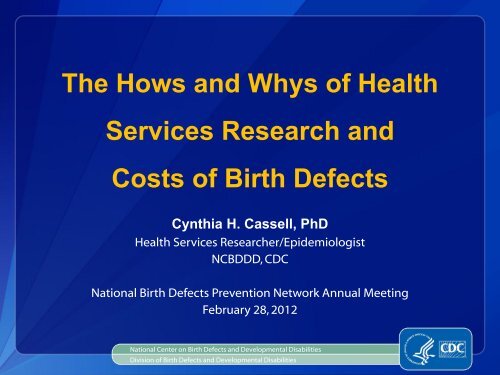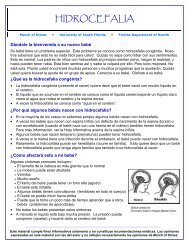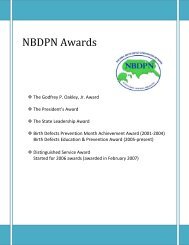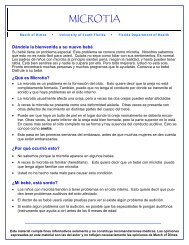The Hows and Whys of Health Services Research and Costs of Birth ...
The Hows and Whys of Health Services Research and Costs of Birth ...
The Hows and Whys of Health Services Research and Costs of Birth ...
- No tags were found...
Create successful ePaper yourself
Turn your PDF publications into a flip-book with our unique Google optimized e-Paper software.
PROGRAMM der Listenvereinigung „Bündnis DKP / KPD“für die L<strong>and</strong>tagswahl am 26.03.2006 in Sachsen-AnhaltWer wir sind, was wir wollenErklärung der DKP Sachsen-Anhalt zur L<strong>and</strong>tagswahl 2006 neben und damit auchgegen die Linkspartei.PDS anzutretenPositionspapier der DKP Nordharz zu den L<strong>and</strong>tagswahlen17.02.06Volksstimme-Serie " Parteien zur Wahl " /MDR.DE-L<strong>and</strong>tagswahl 4.März 2006Investoren vertreiben! Kapitalismus abwählen!Junge Welt 22.03.2006 »Linkspartei ist Partei des Entschuldigens«Volksstimme 30.09.05Ziel zur L<strong>and</strong>tagswahl 2006 Linke will stärker als SPD undCDU werdenJW30.03.2006 / Abgeschrieben / Seite 8DKP-Parteivorst<strong>and</strong> zu den L<strong>and</strong>tagswahlen- Material nur für den innerparteilichen Gebrauch -1
Outline• What is health services research?• Why is health services research important?• Why study costs <strong>of</strong> birth defects?• Who is collecting health services research data?
Definition <strong>of</strong> <strong>Health</strong><strong>Services</strong> <strong>Research</strong>• Relationship between health service delivery <strong>and</strong> healthneeds <strong>of</strong> the population• Applied, multidisciplinary research methods• Includes cost <strong>and</strong> timeliness <strong>of</strong> servicesBowling A. <strong>Research</strong> Methods in health: investigating health <strong>and</strong> health services. 2 nd edition. Open University Press, Philadelphia, 2002.
Importance <strong>of</strong> Conducting <strong>Health</strong> <strong>Services</strong><strong>Research</strong> among Children with <strong>Birth</strong> DefectsAccess tocarePolicy <strong>and</strong> programdevelopment <strong>and</strong>implementationEducationOutcomes<strong>and</strong>Quality <strong>of</strong>LifeDiagnosis <strong>of</strong>conditionSurveillance (e.g.,rates, prevalence,incidence)Referral, treatment<strong>and</strong> management
Why Study <strong>Costs</strong> <strong>of</strong><strong>Birth</strong> Defects?• Identify problem <strong>and</strong> resources— Conduct research on causes• Examine attributable costs— <strong>Health</strong> care— Special education• Assess benefits <strong>of</strong> prevention— Lifetime costs— Folic acid supplementation• Develop policy
Methods for Conducting <strong>Health</strong>Service <strong>Research</strong> for <strong>Birth</strong> Defects• Use <strong>of</strong> administrative data only– Hospital discharge data– <strong>Health</strong> insurance claims data (e.g., MarketScan)• Use <strong>of</strong> birth defect registries to identify children <strong>and</strong> linkwith administrative data• Use <strong>of</strong> parental surveys– National Survey <strong>of</strong> Children with Special <strong>Health</strong> CareNeeds– Local studies with state birth defects surveillanceprograms
NBDPN Survey:Preliminary Results• ~35 operational birth defects surveillance programs• 45.7% (n=16) have access to cost or charge data duringfirst year <strong>of</strong> life• Some states have cost information beyond first year <strong>of</strong> life• Some states only link to Medicaid or hospital dischargedata for cost or charge information• Very few states have cost information from a HMO orprivate insurance
NBDPN Survey:Preliminary Results• How are cost or charges data used?– Economic analysis• Cost-benefit• Cost-effectiveness– Program planning <strong>and</strong> justification– Needs assessment– Legislative request
CONCLUDING THOUGHTS
<strong>Health</strong> <strong>Services</strong> <strong>Research</strong> <strong>and</strong><strong>Birth</strong> Defects Registry Data• <strong>Birth</strong> defects registry data can be a useful tool in health servicesresearch— Identification <strong>and</strong> referral— Outcomes— <strong>Health</strong> service needs— Policy development <strong>and</strong> planning— <strong>Costs</strong>• Definition <strong>of</strong> ‘cost’ <strong>and</strong> cost perspectives• North Carolina <strong>Birth</strong> Defects Monitoring Program— Active surveillance• Florida <strong>Birth</strong> Defects Registry— Passive surveillance
Other “<strong>Costs</strong>” to Consider:• Out-<strong>of</strong>-pocket costs• Transportation costs• Time spent seeking medical care• Special education <strong>and</strong> early intervention• Loss <strong>of</strong> parental earnings— Reduced employment— Reduced wages (rarely estimated)• Loss <strong>of</strong> personal care, social, <strong>and</strong> leisure time
Recommendations <strong>and</strong><strong>Research</strong> Needs• Link with available birth defects registries <strong>and</strong>administrative data• Conduct longitudinal studies• Include all payer types: private <strong>and</strong> public• Examine relationship between insurance status<strong>and</strong> access to care <strong>and</strong> short- <strong>and</strong> long-termoutcomes• Determine other types <strong>of</strong> costs• Assess factors related to access to care, timeliness<strong>of</strong> services <strong>and</strong> cost
http://www.cdc.gov/dhdsp/programs/nhdsp_program/economic_evaluation/index.htm
Thank you!Special Acknowledgments to:Scott Grosse, Suzanne Gilboa, MargaretHonein, Cara Mai, Cora Peterson,Beth Radcliff, Phoebe Thorpe,Jessica Knight <strong>and</strong>NBDPN survey respondentsFor more information please contact Centers for Disease Control <strong>and</strong>Prevention1600 Clifton Road NE, Atlanta, GA 30333Telephone, 1-800-CDC-INFO (232-4636)/TTY: 1-888-232-6348E-mail: cdcinfo@cdc.gov Web: www.cdc.gov<strong>The</strong> findings <strong>and</strong> conclusions in this report are those <strong>of</strong> the authors <strong>and</strong> do not necessarily represent the <strong>of</strong>ficialposition <strong>of</strong> the Centers for Disease Control <strong>and</strong> Prevention.National Center on <strong>Birth</strong> Defects <strong>and</strong> Developmental DisabilitiesDivision <strong>of</strong> <strong>Birth</strong> Defects <strong>and</strong> Developmental Disabilities
References• Boulet SL, et al. Children with or<strong>of</strong>acial clefts: health-care use<strong>and</strong> costs among a privately insured population. Public <strong>Health</strong>Rep 2009;124(3): 447-53.• Boulet SL, et al. <strong>Health</strong> care expenditures for infants <strong>and</strong> youngchildren with Down syndrome in a privately insured population.J Pediatr 2008;153(2):241-6.• Case AP <strong>and</strong> Canfield MA. Methods for developing usefulestimates <strong>of</strong> the costs associated with birth defects. BDRA2009;85:920-924.• Cassell CH, et al. <strong>Health</strong> care expenditures among Medicaidenrolledchildren with <strong>and</strong> without spina bifida in NC. BDRA2011;91:1019-1027.• Cassell CH, et al. <strong>Health</strong> care expenditures among Medicaidenrolled children with <strong>and</strong> without or<strong>of</strong>acial clefts in NC, 1995-2002. BDRA 2008;82:785-794.
References (continued)• Cassell CH, et al. Timeliness <strong>of</strong> primary cleft lip/palate surgeryamong children with or<strong>of</strong>acial clefts in NC, 1995-2002. CleftPalate-Crani<strong>of</strong>acial J. 2009;46;588-597.• Cassell CH, et al. Timeliness <strong>of</strong> services during the first two years<strong>of</strong> life among Medicaid-enrolled children with or<strong>of</strong>acial clefts inNC, 1995-2002. NC SCHS Studies. Apr 2008. No. 157. p.1-4.• Centers for Disease Control <strong>and</strong> Prevention. Current trendseconomic burden <strong>of</strong> spina bifida—United States, 1980-1990.MMWR 1989;38(15): 264-267. Available from:http://www.cdc.gov.mmwr/preview/mmwrhtml/00001378.htm• Grosse SD, et al. Economic evaluation <strong>of</strong> a neural tube defectrecurrence-prevention program. Am J Prev Med 2008;35:572-577.
References (continued)• Grosse SD, et al. Re-evaluating the benefits <strong>of</strong> folic acidfortification in the United States: Economic analysis, regulation,<strong>and</strong> public health. Amer J Public <strong>Health</strong> 2005; 95:1917-1922.• Harris JA <strong>and</strong> James L. State-by-state cost <strong>of</strong> birth defects--1992.Teratology 1997;56(1-2):11-6.• Ouyang L, et al. <strong>Health</strong> Care Expenditures <strong>of</strong> children <strong>and</strong> adultswith spina bifida in a privately insured U.S. population. BDRA2007; 79:552–558.• Russo CA, Elixhauser A. Hospitalizations for birth defects, 2004.HCUP Statistical Brief #24. Rockville, MD: U.S. Agency for<strong>Health</strong>care <strong>Research</strong> <strong>and</strong> Quality, 2007. www.hcup-us.ahrq.gov• Salemi JL, et al. <strong>The</strong> relative contribution <strong>of</strong> data sources to abirth defects registry utilizing passive multi-sourceascertainment methods: does a smaller birth defects caseascertainment net lead to overall or disproportionate loss? JRegistry Management 2011;38:30-38.
References (continued)• Tilford JM, et al. Labor market productivity costs for caregivers <strong>of</strong>children with spina bifida: a population-based analysis. Med DecisMaking 2009; 29; 23-32.• Tilford JM, et al. <strong>Health</strong> state preference scores <strong>of</strong> children withspina bifida <strong>and</strong> their caregivers. Quality <strong>of</strong> Life <strong>Research</strong> 2005; 14:1087-1098.• Waitzman NJ, et al. Economic cost <strong>of</strong> birth defects <strong>and</strong> cerebralpalsy-United States, 1992. MMWR 1992;44(37):694-99. Availablefrom:http://www.cdc.gov/mmwr/preview/mmwrhtml/00038946.htm• Waitzman NJ. <strong>The</strong> cost <strong>of</strong> birth defects: estimates <strong>of</strong> the value <strong>of</strong>prevention. Lanham: University Press <strong>of</strong> America; 1996.• Waitzman NJ, Romano PS, Grosse SD. Half-life <strong>of</strong> cost <strong>of</strong> illnessestimates: the case <strong>of</strong> SB. In: Wyszynksi DF, ed. NTD: from origin totreatment. New York: Oxford University Press, 2005.• Weiss J, et al. Hospital use <strong>and</strong> associated costs <strong>of</strong> children agedzero-to-two years with crani<strong>of</strong>acial malformations in MA. BDRA2009;85:925–34.











